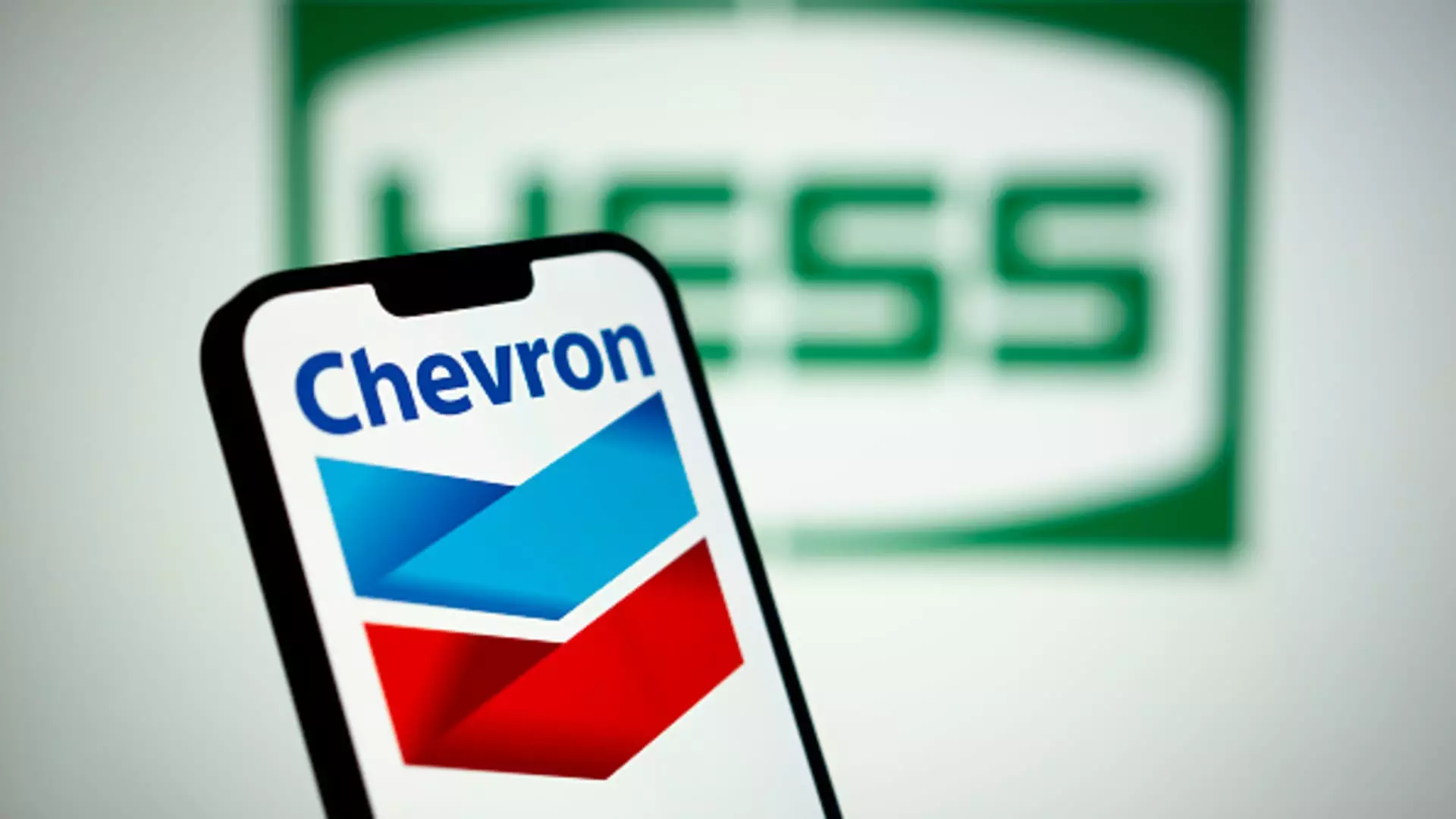Chevron’s third-quarter financial report revealed a complex landscape of both achievements and challenges. While the company surpassed both earnings and revenue expectations from analysts—reporting a noteworthy $50.67 billion in revenue against an anticipated $48.99 billion—it faced a significant decline in net income, down 31% year-over-year to $4.49 billion or $2.48 per share. This drop can be attributed to lower refined product margins and a decrease in oil prices, compounded by the absence of advantageous tax circumstances that had previously buoyed earnings. Despite these setbacks, Chevron’s ability to deliver adjusted earnings of $2.51 per share is indicative of its resilience in managing operational efficiency, especially amidst fluctuating market conditions.
One of the defining aspects of Chevron’s recent performance is its commitment to returning capital to shareholders. With a record $7.7 billion returned in the third quarter, including an impressive $4.7 billion through share buybacks and $2.9 billion in dividends, Chevron emphasizes its strategy of delivering value to its investors even as it navigates declining profit margins. This approach resonates powerfully in today’s investment climate, where shareholders are increasingly inclined to favor companies that prioritize returns, thereby safeguarding stock performance despite profitability challenges. This focus on shareholder value may contribute to a slight increase in share prices—a modest 2.6% rise in pre-market trading highlights market confidence in Chevron’s strategic maneuvers.
Chevron’s future strategy includes significant portfolio adjustments, with the planned divestment of assets in Canada, Congo, and Alaska expected to finalize by the end of 2024. The company has set ambitious cost-cutting targets, aiming to reduce expenses by $2 billion to $3 billion from 2024 through the close of 2026. Such steps indicate Chevron’s forward-looking approach to maintaining operational agility in a competitive market. By honing in on core assets and minimizing excess, Chevron is positioning itself to fortify its market presence and streamline its operational efficiency.
While Chevron posts strong results, looming uncertainties cannot be overlooked, particularly concerning its pending $53 billion acquisition of Hess Corporation. Although the Federal Trade Commission has cleared the acquisition, conditions imposed—such as barring Hess CEO John Hess from joining Chevron’s board—underscore potential challenges ahead. Furthermore, Chevron faces a dispute with Exxon Mobil over Hess’s valuable oil assets in Guyana. Should the arbitration favor Exxon, Chevron’s acquisition could face significant hurdles that might thwart its ambitions and further complicate its strategy for growth.
Chevron’s third-quarter performance showcases a company at a crossroads, balancing impressive shareholder returns against the backdrop of declining operating profits and external challenges related to acquisitions. The strategic shifts in its portfolio and cost management initiatives appear to be focused on sustaining long-term growth. However, the uncertainties surrounding the Hess acquisition and competitive dynamics within the industry suggest that Chevron must navigate a meticulous course to retain its status in a rapidly evolving energy market. The coming quarters will be pivotal in determining whether Chevron can successfully manage these challenges while capitalizing on its foundational strengths.

Leave a Reply